Torta Ahogada: the Drowned Sandwich
Most of the time–most of the time–street foods are designed to be eaten on the go, handheld, contained, wrapped or skewered or otherwise relatively easily handled. Not always though. Sometimes a sandwich or wrap will be overstuffed or excessively condimented, primed to burst from its enclosure at the slightest mishandling. Sometimes a skewer will be dipped and drizzled and coated in so many delicious sauces that no wax paper wrapper can prevent messy hands and wrists. Sometimes a bowl of food simply has so much stuff in it that it can’t help but slosh around and end up spattered wantonly over ones face, chest, thighs and knees and forearms.
Torta ahogada presents all of the street food problems listed above in a single, delicious package. A favorite of Guadalajara, the largest city in the Mexican state of Jalisco, it is not a common menu item in the US, even for places with a rich and varied selection of Mexican cuisines available like Chicago. I spent the month of November seeking out a variety of tortas from a fairly diverse mix of Mexican restaurants. Only a fraction of them offered Torta Ahogada, perhaps due to the difficulties both in serving and in eating the item.
Ahogada means “drowned,” and the torta ahogada is in fact drowned before serving. It consists of a sandwich of carnitas, a type of seasoned, shredded pork, stuffed into a crusty roll, dipped whole into a tomato/chile arbol sauce, and served in a shallow–or not-so-shallow–dish of the same. The sandwich sometimes includes a swipe of refried beans, and common accompaniments or garnishes include onions, raw or pickled; sliced radishes; or even side tacos, often fried crisp. The star of the show, though, is that sauce. One of the highlights of my month of tortas in November was the torta ahogada from 5 Rabanitos, a revelation of crusty bolillo stuffed with carnitas and black beans, halved and rising to tapering points from a bowl of spicy red broth.
This serving style echoes that of River North sandwich shop XOCO, where 5 Rabanitos chef Alfonso Sotelo once worked, helping prepare the infamous Rick Bayless version of the sandwich before striking out on his own. I’ve eaten both recently and I’d hate to have to choose one or the other. The XOCO version is a classic and delicious, with a perfectly crusty roll, elegantly if minimally filled, served in a bowl of intensely savory broth. The 5 Rabanitos version really captured my attention though, both with its more carefully arranged and garnished presentation and with the richness and perfect spice level of the tomato/arbol broth. I appreciate this style of serving the ahogada, the crusty roll jutting from the richness of the tomato/chili jus, because most of the sandwich remains dry and easily handled, and one can alternate bites between the two halves while letting the other half soak up the delicious sauce.
For the most part, though, when you order a torta ahogada at the rare Mexican restaurant that carries them, the XOCO/5 Rabanitos paradigm is not how the sandwich will be served. My first ahogada experience this month was at Restaurante Tenochtitlan in Blue Island, IL.
I sat down, having called to confirm that Restaurante Tenochtitlan served a torta ahogada, only to learn that tortas ahogada are not included on their regular dine-in menu–they are a carryout menu item only. However, they were kind enough to let me order it and dine in.
I’ve learned that there are a few variables when it comes to the torta ahogada’s liquid component. Some sauces are thicker, some are more broth-like; some are spicier, some are milder, and some places will serve the sandwich drowned only in a mild tomato sauce, but provide a chile arbol sauce on the side to bring the pain if desired. Restaurante Tenochtitlan served a slightly thicker, milder sauce, but with a small plastic container of absolutely brutal chile arbol sauce that I stupidly spread thickly over every inch of this sandwich.
The carnitas at Restaurante Tenochtitlan were much better than their appearance indicated–at first, I thought perhaps I was looking at the weird steak cube things I find so confusing at Chipotle–am I supposed to eat them or play D&D with them?
But the pork was more tender than it looked, and did fall apart into shreds as I ate the sandwich, using knife and fork rather than my hands. The bread was not particularly crusty, and slowly disintegrated as I ate, a pattern that would repeat itself throughout the month.
At the far end of the sauce thickness spectrum–though this sauce was both richly savory and incredibly spicy, bringing me to tears by the time I’d finished the sandwich–was the torta ahogada from Maize Mexican Grill in Champaign, IL. Some things about this sandwich were less authentic–rather than the simple carnitas and (sometimes) beans of the standard torta ahogada, Maize offered several filling options, of which I chose the chicken (pork was not among the offerings). The soft telere roll also came fully dressed with lettuce, shredded cheese, etc. In a way, it was very much like a typical torta, but for the fact that it was served in a bowl of sinus-clearing broth.
I really liked this sandwich, though again, the bread was quite soft and given the relative liquidity of the sauce, it fell apart even faster than most. The bottom half was completely sodden by the time the plate hit the table, and even if one had wanted to, the sandwich could not have been picked up and eaten out of hand. Still, I’d order this one again simply because the sauce was so good, and so hot.
By far the least typical or traditional torta ahogada I had this month was the Friday special at Wicker Park hot spot Dove’s Luncheonette. This hipster diner’s menu appears to drag Mexican cuisine through the American South–fried chicken with chorizo gravy, short ribs with hominy, a chile relleno stuffed with smoked chicken. The Friday “Ham and cheese torta ahogada” though looks as if it takes inspiration from a different cuisine entirely–Portuguese.
The sauce, rather than a straight tomato-and-chile-arbol sauce, appeared to be more of a tomato and beer sauce. Along with the ham and cheese inside and the fried egg on top, it sure made me think of the Portuguese Francesinha more than a torta ahogada. Of course, to be a true Francesinha it would need 2-3 more kinds of meat inside. It was a tasty enough lunch, but between the half-hour round trip via public transit and the 20-25 minute wait for seats on a busy Friday at lunchtime, it’s not a sandwich I’ll be eating again any time soon.
In November, as part of my exploration of tortas, I tried the Lonche Caliente from West Lawn Mexican restaurant Las Picosas, a crisp elongated roll stuffed with shredded pork and a spicy savory sauce, with pickled jalapenos served on the side. At the time I noted that Las Picosas also had a torta ahogada on the menu. Earlier this month, on a work-from-home day, I was able to return for a quick lunch and try it.
The Las Picosas torta ahogada was served with a mild tomato sauce, on the thin end of the spectrum but with more body than some of the more brothlike sauces I tried this month. Las Picosas included both a bottle of hot sauce and a ramekin of salsa arbol on the side to spice it up. Rather then crusty, the bread appeared to be a bit on the stale side, a situation quickly remedied by soaking in the tomato sauce. This stale roll was filled with shredded pork and sliced raw onions. Additionally, on the side, the sandwich was served with a crispy deep-fried taco filled with refried beans.
Though the sauce did help soften the bread, the sandwich was still too stiff and stale to eat with a knife and fork, and had to be picked up and eaten out of hand. While the sauce was quite good, the ratio of pork to onions was not weighted in the pork’s favor. If I were to return to Las Picosas, their unique Lonche Caliente is something I would definitely order again. This torta ahogada is not.
In Calumet City, we found a little mom-and-pop Mexican restaurant serving tortas ahogada called Taqueria Mammy Chayo. Everything about the place was adorable. I wanted so badly to like it. Inside the bright red storefront, there was a small anteroom for carryout orders, with a door leading back to a 5-booth dining room, complete with a lovely little shrine.
The stoneware at Mammy Chayo is charmingly hand-made, including this 4-part salsa dish with handle. The salsas also were quite good, though the chips were standard storebought totopos from a bag.
The dish in which the torta ahogada was served was also adorable and handmade. The torta ahogada itself was served with a small fried bean taco, like the one from Las Picosas had been.
It was also served on an extremely soft bollilo roll, too soft for the sauce it was served in and yet too thick for the filling placed inside. It was served with thick-cut slabs of red onion, including a decorative knot of red onion skin, that were a beautiful garnish but were completely out of proportion for the sandwich itself.
The beans were quite good but the thin scattering of carnitas was again out of proportion, too meager for the thick soft roll. Similarly, Mindy’s steak burrito was poorly engineered, falling apart as soon as it was picked up. There were some great flavors in this place, especially with the salsas, but while the obviously hand-made nature of the stoneware was endearing, the clumsily hand-made nature of the food was less appealing. Most every individual ingredient was delicious but the way they were assembled was frustratingly off. It was good enough that I feel almost obligated to give them another chance, but I enjoyed the sign I noticed on the way to Taqueria Mammy Chayo more than I did the food at the taqueria itself.
The last torta ahogada I had this month–and it was going to have to be the last, as I found myself burning out on this sandwich almost as soon as the month had begun–was a small storefront in Chicago’s Little Village neighborhood called Don Pepe. Mindy and I visited on a Sunday afternoon, and found ourselves greeted by live entertainment–an older gentleman with a beautiful tenor voice singing Mexican standards to the accompaniment of a karaoke machine standing near the front window of the restaurant. Don Pepe’s table salsas were far more standard / less interesting than Mammy Chayo’s had been, but the sandwich itself was far more to my liking.
Don Pepe’s sandwich came fully drowned in a mild tomato sauce slightly on the thicker end of the spectrum, absolutely bursting with spectacular carnitas, and with a mound of truly great pickled onions piled right into the sauce dish alongside the sandwich. On the side were a few lime wedges and a salsa arbol to spice things up. The top half of the very slightly crusty bolillo roll was just softened by a light film of tomato sauce ladled over the whole, the bottom half of course completely sodden and covered in pork. I devoured this sandwich, massive pile of pickled onions and all.
I can’t express what a relief it was to end the month on a good version of a sandwich that can be frustratingly inconsistent. I love the idea of the torta ahogada–like the French dip, or the beef on weck, or Chicago’s own Italian beef, I am a fan of the idea of a sandwich served with a richly-flavored savory bread-moistening jus.
But not every bread is suited for this–the bread used in Guadalajara itself is, according to various sources, invariably the crisp and firm birote salado, a salty demibaguette native to Jalisco. Sourcing the proper bread may be difficult in the US, which goes a long way toward explaining why the sandwich is both so rare and so inconsistent here. Flights to Guadalajara look to be pretty reasonable. Perhaps one day I can go try the real thing. For now, I’ve had more than my fill. On to the next sandwich!

I like sandwiches.
I like a lot of other things too but sandwiches are pretty great


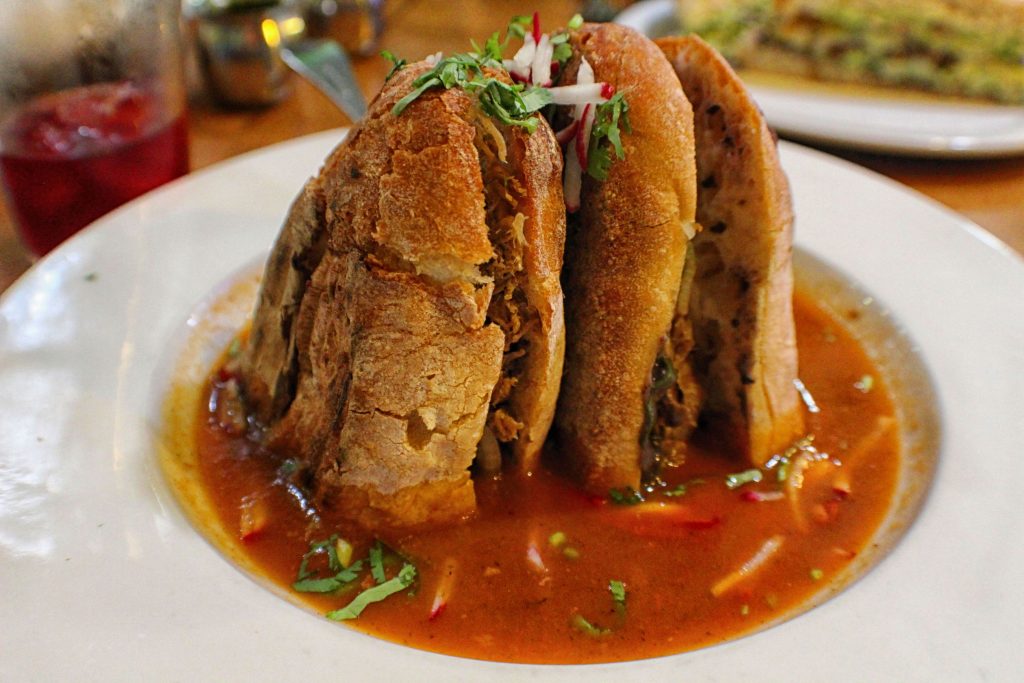
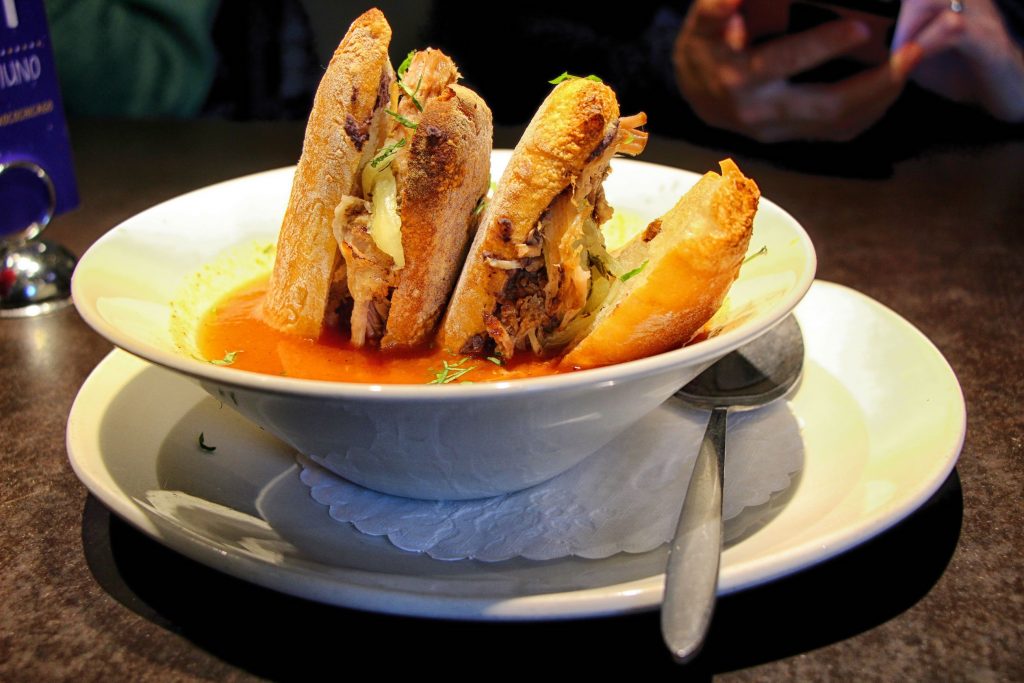

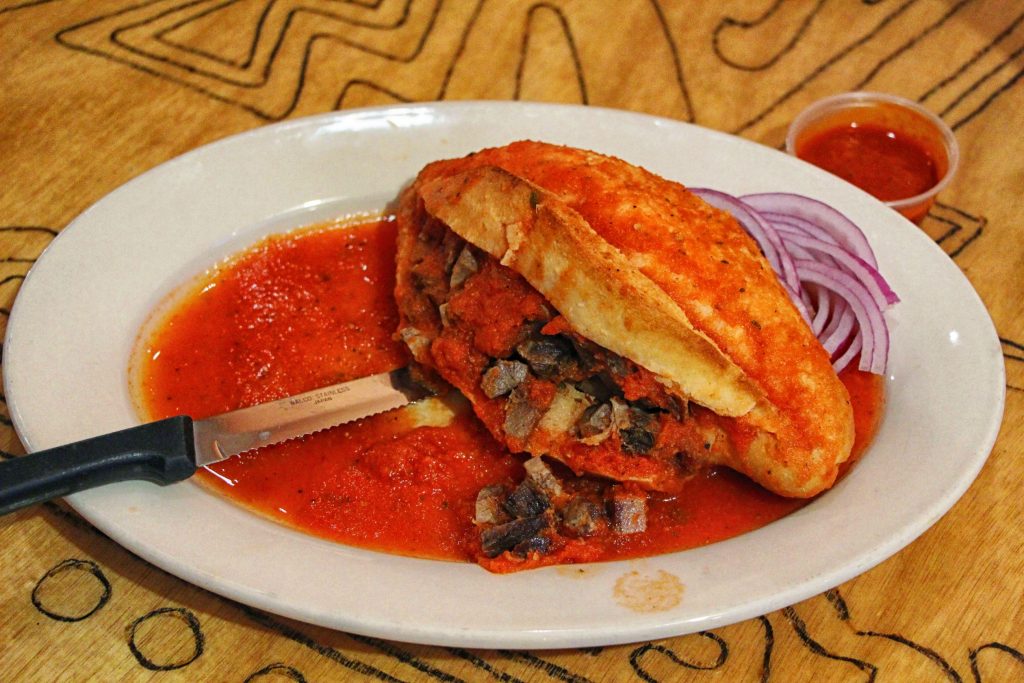




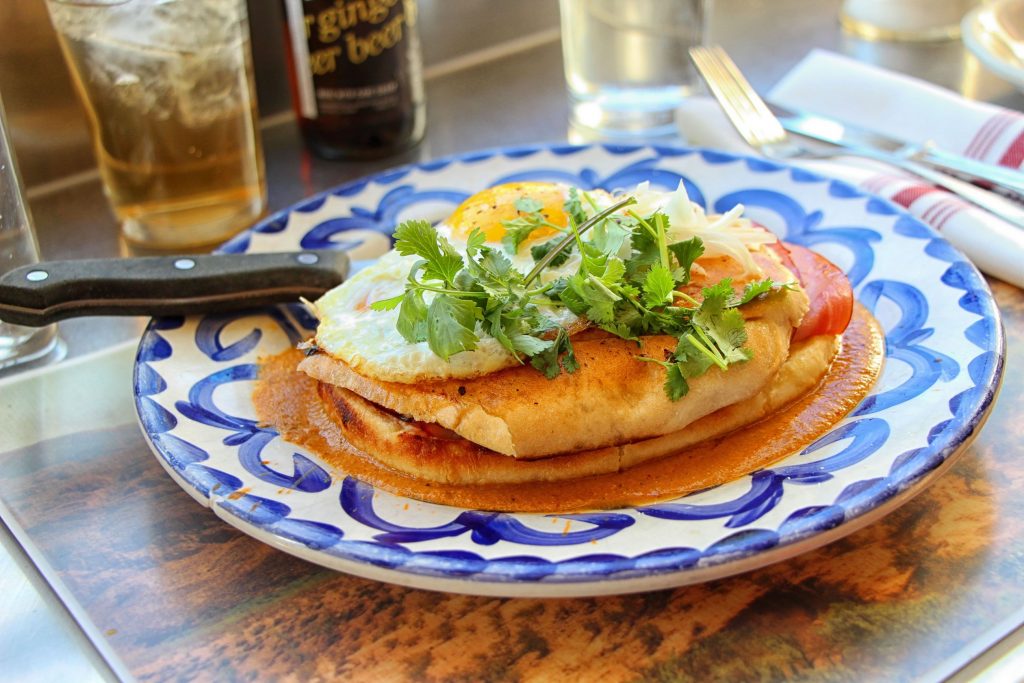
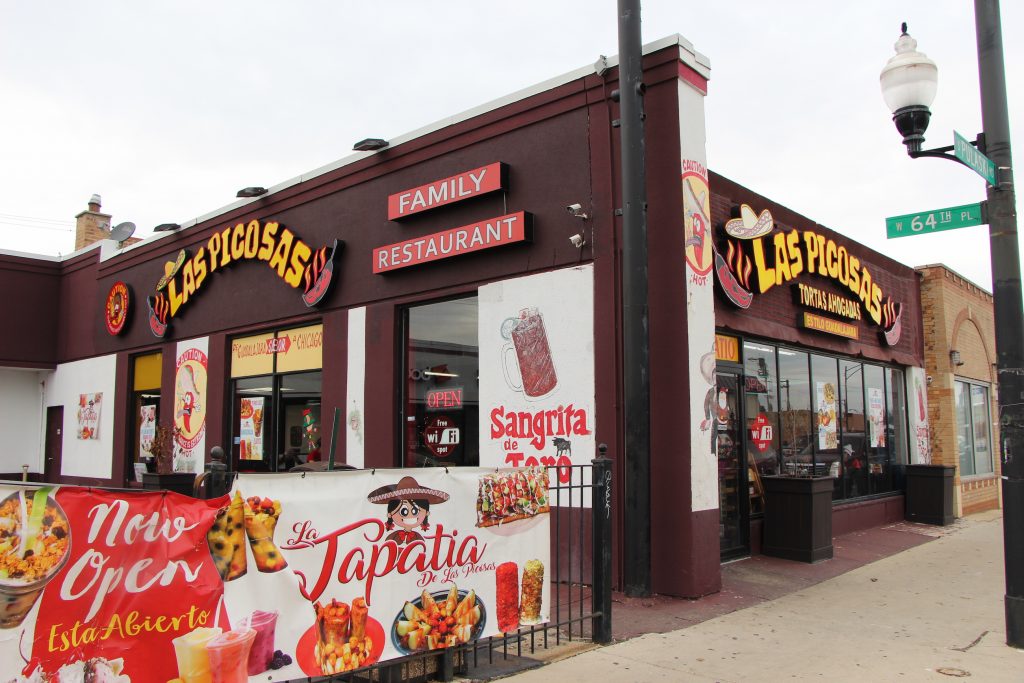
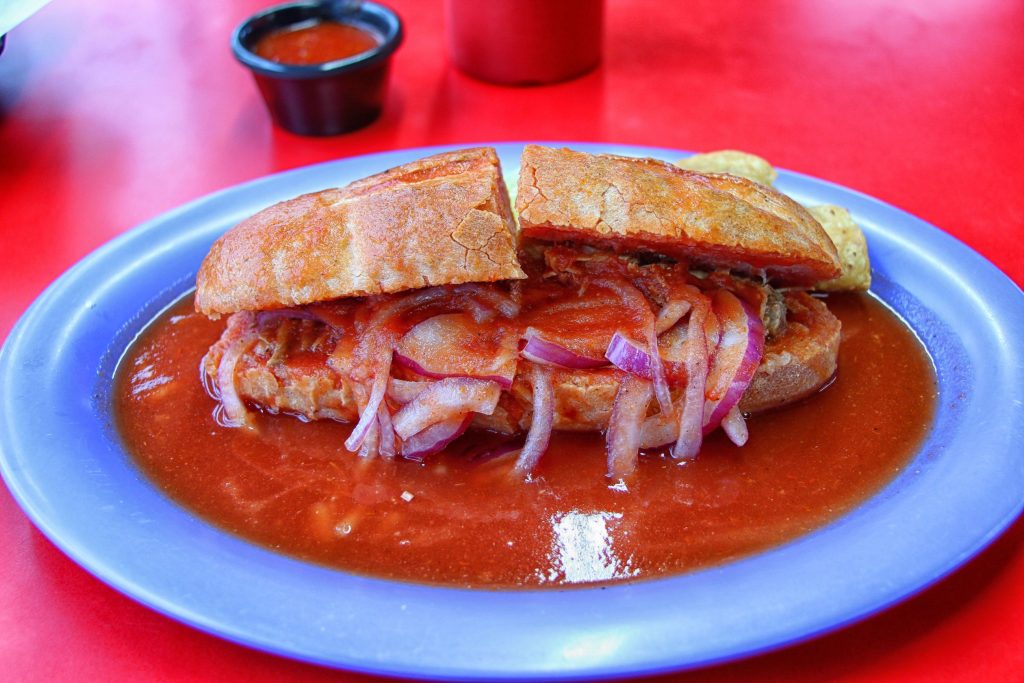

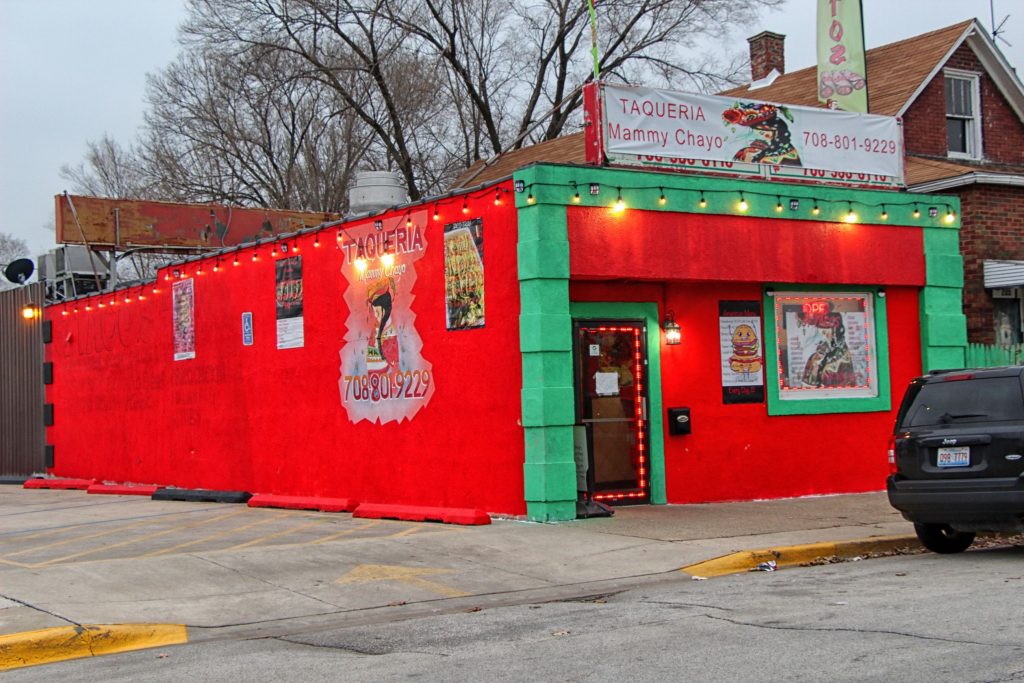
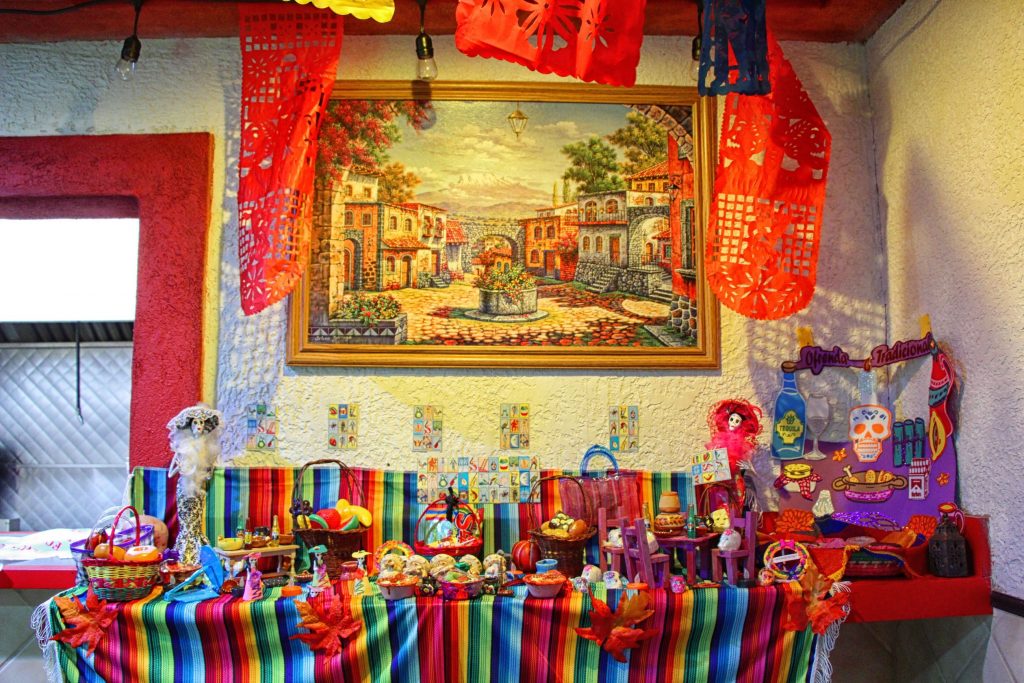
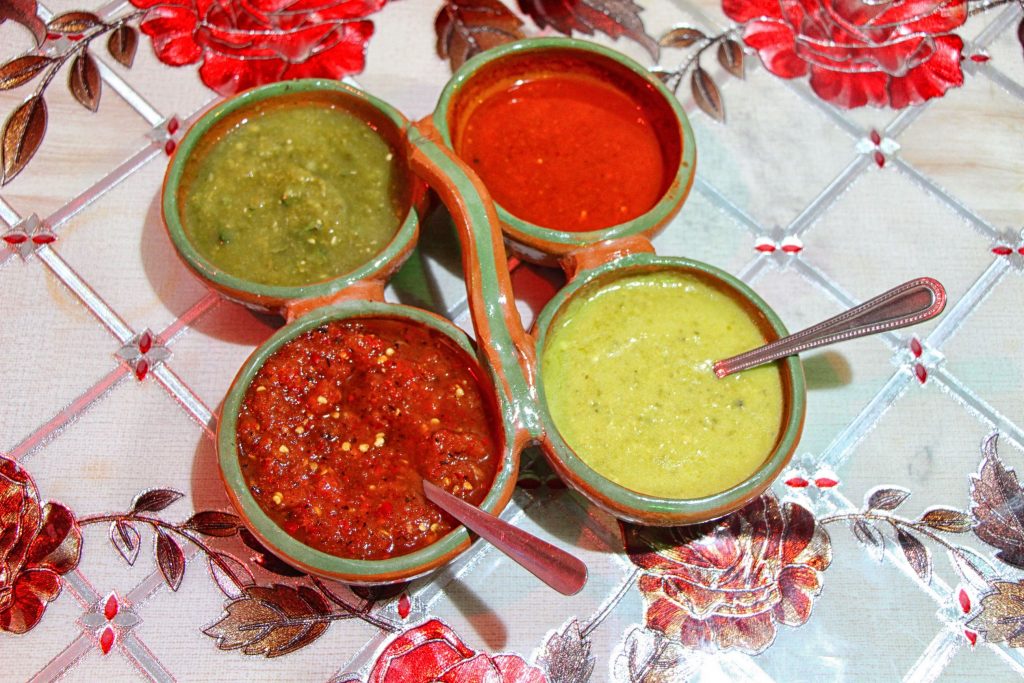
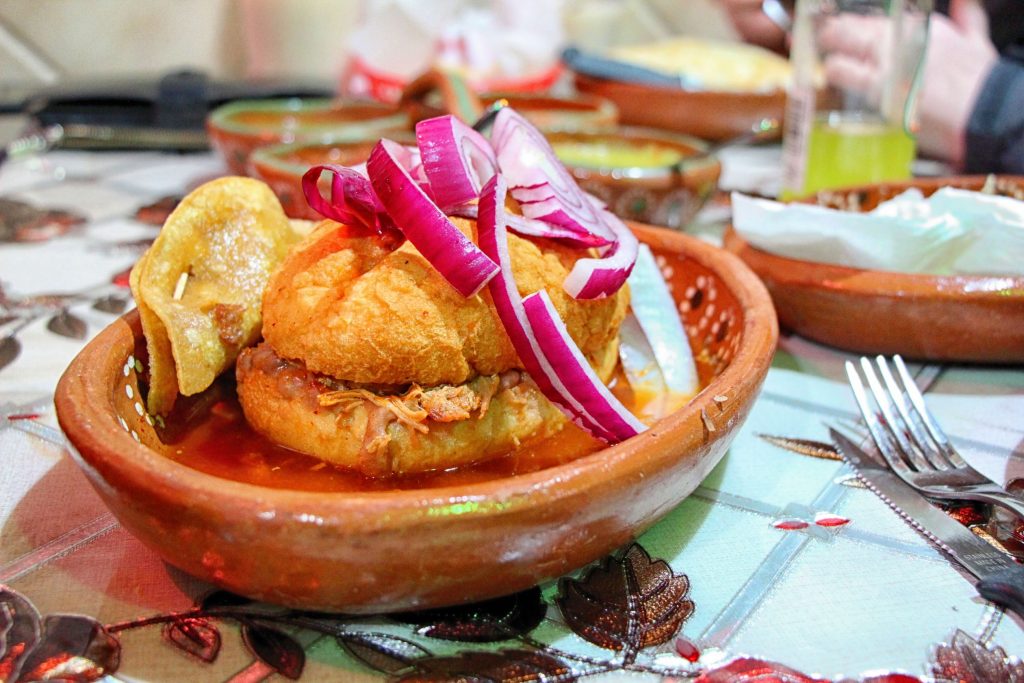
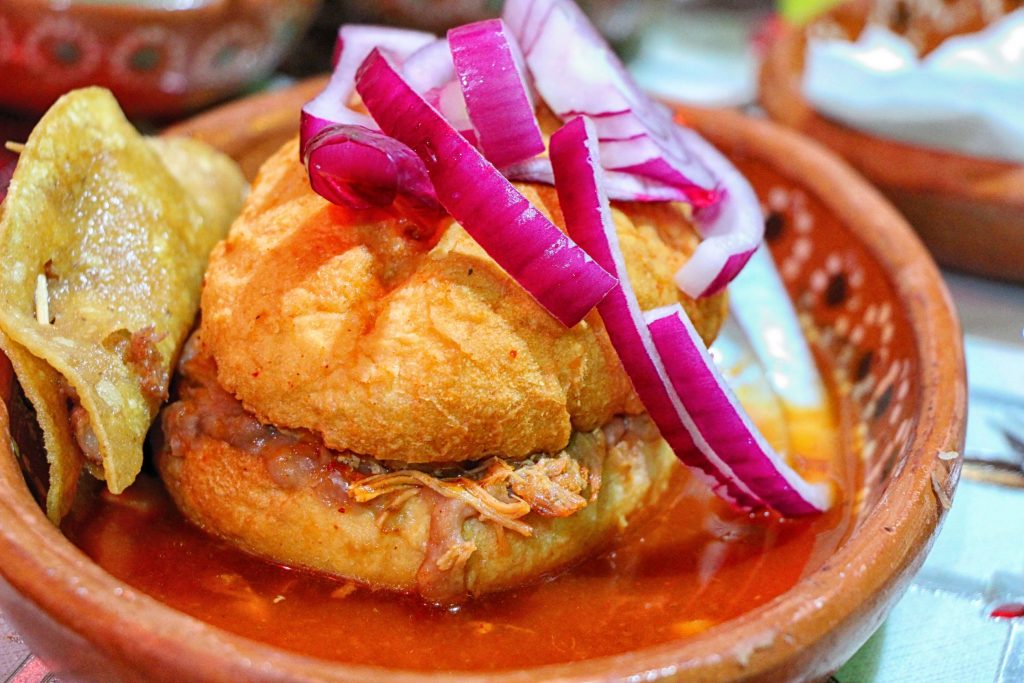
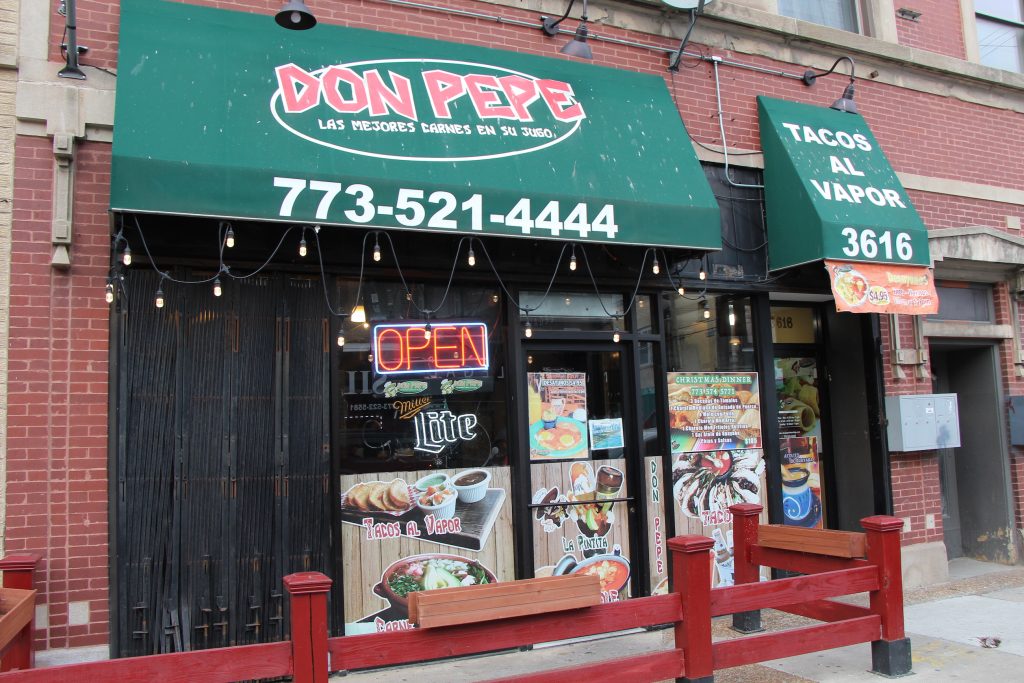

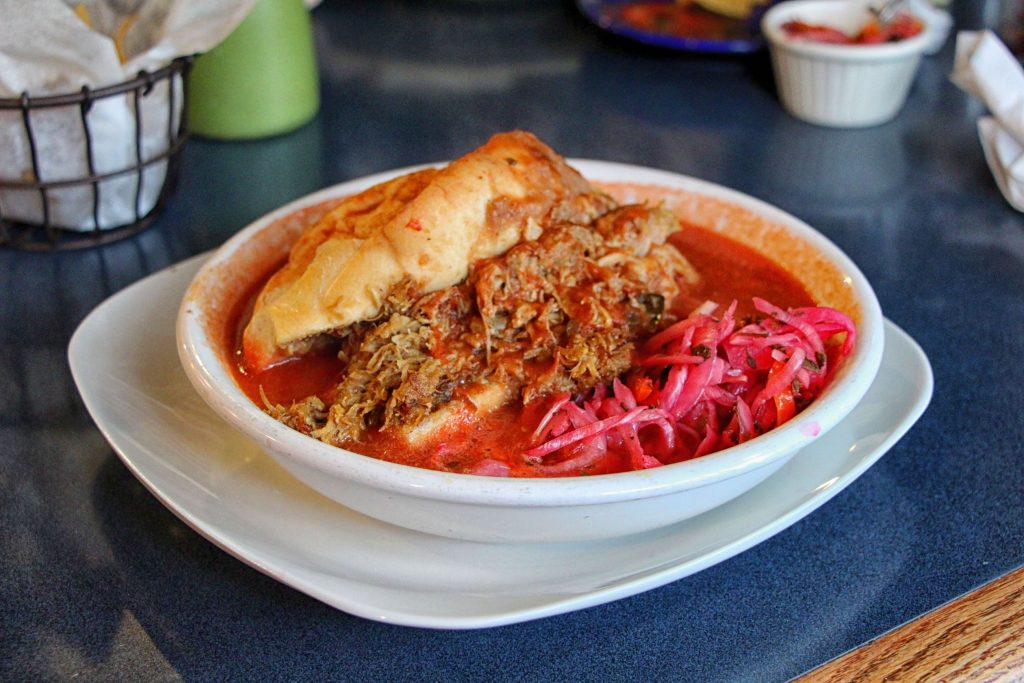









Recent Comments